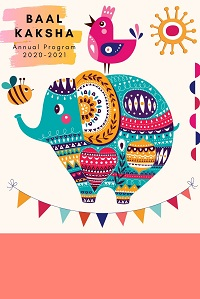Price: $199 (16 Classes, 1.5 Hours per Class) VHS Certificate after successful completion of Annual Program.
Program Name: Kaksha 6 Semester 1
Program Name: Kaksha 6 Semester 1
Mode: Online
Class Duration: 1.5 Hour
Frequency : Once in a weekAge-Group : 11-12 years
Class Schedule:Days |
Monday | Tuesday |
|---|---|---|
| Timing (CST) | 5:30pm-7:00pm | 5:30pm-7:00pm |
| Start Date | End Date | Fee (USD) | Total Classes | |
|---|---|---|---|---|
| Semester-1 | Aug 2020 | Dec 2020 | $199 | 16 Classes |
| Semester-2 | Jan 2021 | May 2020 | $199 (due in Nov) | 16 Classes |
Proficiency:
-
Reading-
-
At the Intermediate High sublevel, readers are able to understand fully and with ease short, non-complex texts that convey basic information and deal with personal and social topics to which the reader brings personal interest or knowledge.
-
These readers are also able to understand some connected texts featuring description and narration although there will be occasional gaps in understanding due to a limited knowledge of the vocabulary, structures, and writing conventions of the language.
-
Writing-
-
Students at the Intermediate High sublevel are able to meet all practical writing needs of the Intermediate level.
-
Additionally, they can write compositions and simple summaries related to work and/or school experiences.
-
They can narrate and describe in different time frames when writing about everyday events and situations.
-
These narrations and descriptions are often but not always of paragraph length, and they typically contain some evidence of breakdown in one or more features of the Advanced level.
-
For example,these writers may be inconsistent in the use of appropriate major time markers, result- ing in a loss of clarity
-
The vocabulary, grammar, and style of Intermediate High writer essentially correspond to those of the spoken language.
-
Intermediate High writing, even with numerous and perhaps significant errors, is generally comprehensible to natives not used to the writing of non-natives, but there are likely to be gaps in comprehension.
Speaking-
Intermediate High speakers are able to converse with ease and confidence when dealing with the routine tasks and social situations of the Intermediate level.
Intermediate High speakers can handle a substantial number of tasks associated with the Advanced level, but they are unable to sustain performance of all of these tasks all of the time.
Intermediate High speakers can narrate and describe in all major time frames using connected discourse of paragraph length, but not all the time.
Typically, when Intermediate High speakers attempt to perform Advanced- level tasks, their speech exhibits one or more features of breakdown, such as the failure to carry out fully the narration or description in the appropriate major time frame, an inability to maintain paragraph-length discourse, or a reduction in breadth and appropriateness of vocabulary.
Intermediate High speakers can generally be understood by native speakers unaccustomed to dealing with non-natives, although interference from another language may be evident (e.g., use of code-switching, false cognates, literal translations), and a pattern of gaps in communication may occur.
Listening-
At the Intermediate High level, students are able to understand, with ease and confidence, simple sentence length speech in basic personal and social contexts.
They can derive substantial meaning from some connected texts typically understood by Advanced-level listeners although there often will be gaps in understanding due to a limited knowledge of the vocabulary and structures of the spoken language. .
* This Program has two Semesters.
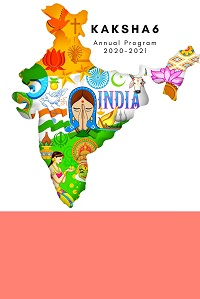
Price: $199 (16 Classes, 1.5 Hours per Class) VHS Certificate after successful completion of Annual Program.
Program Name: Kaksha 5 Semester 1
Program Name: Kaksha 5 Semester 1
Mode: Online
Class Duration: 1.5 Hour
Frequency : Once in a weekAge-Group : 10-11 years
Class Schedule:Days |
Monday | Tuesday | Wednesday | Thursday | Friday |
|---|---|---|---|---|---|
| Timing (CST) |
5:30pm-7:00pm | 5:30pm-7:00pm | 5:30pm-7:00pm | 5:30pm-7:00pm | 5:30pm-7:00pm |
| Start Date | End Date | Fee (USD) | Total Classes | |
|---|---|---|---|---|
| Semester-1 | Aug 2020 | Dec 2020 | $199 | 16 Classes |
| Semester-2 | Jan 2021 | May 2020 | $199 (due in Nov) | 16 Classes |
Proficiency:
-
Reading-
-
At the Intermediate Mid sublevel, students are able to understand short, non-complex texts that convey basic information and deal with basic personal and social topics to which the reader brings personal interest or knowledge, although some misunderstandings may occur
-
Readers at this level may get some meaning from short connected texts featuring description and narration, dealing with familiar topics.
-
Writing-
-
Students at the Intermediate Mid sublevel are able to meet a number of practical writing needs
-
They can write short, simple communications, compositions, and requests for information in writers at the Intermediate Mid sublevel are able to meet a number of practical writing needs.
-
They can write short, simple communications, compositions, and requests for information in loosely connected texts about personal preferences, daily routines, common events, and other personal topics.
-
Their writing is framed in present time but may contain references to other time frames
-
The writing style closely resembles oral discourse.
-
Students at the Intermediate Mid sublevel show evidence of control of basic sentence structure and verb forms.
-
This writing is best defined as a collection of discrete sentences and/or questions loosely strung together.
-
There is little evidence of deliberate organization.
-
Intermediate Mid writers can be understood readily by natives used to the writing of non-natives.
-
When Intermediate Mid writers attempt Advanced-level writing tasks, the quality and/or quantity of their writing declines and the message may be unclear.
Speaking-
Conversation is generally limited to those predictable and concrete exchanges necessary for survival in the target culture.
These include personal information related to self, family, home, daily activities, interests and personal preferences, as well as physical and social needs, such as food, shopping, travel, and lodging.
Intermediate Mid speakers tend to function reactively, for example, by responding to direct questions or requests for information.
However, they are capable of asking a variety of questions when necessary to obtain simple information to satisfy basic needs, such as directions, prices, and services.
When called on to perform functions or handle topics at the Advanced level, they provide some information but have difficulty linking ideas, manipulating time and aspect, and using communicative strategies, such as circumlocution.
Intermediate Mid speakers are able to express personal meaning by creating with the language, in part by combining and recombining known elements and conversational input to produce responses typically consisting of sentences and strings of sentences.
Their speech may contain pauses, reformulations, and self-corrections as they search for adequate vocabulary and appropriate language forms to express themselves.
In spite of the limitations in their vocabulary and/or pronunciation and/or grammar and/or syntax, Intermediate Mid speakers are generally understood by sympathetic interlocutors accustomed to dealing with non- natives.
Overall, Intermediate Mid speakers are at ease when performing Intermediate-level tasks and do so with significant quantity and quality of Intermediate-level language.
Listening-
At the Intermediate Mid sublevel, students are able to understand simple, sentence-length speech, one utterance at a time, in a variety of basic personal and social contexts.
Comprehension is most often accurate with highly familiar and predictable topics although a few misunderstandings may occur.
Intermediate Mid listeners may get some meaning from oral texts typically understood by Advanced-level listeners. .
* This Program has two Semesters.
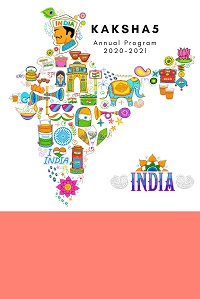
Price: $199 (16 Classes, 1.5 Hours per Class) VHS Certificate after successful completion of Annual Program.
Program Name: Kaksha 4 Semester 1
Program Name: Kaksha 4 Semester 1
Mode: Online
Class Duration: 1.5 Hour
Frequency : Once in a weekAge-Group : 9-10 years
Class Schedule:Days |
Monday | Tuesday | Wednesday | Thursday | Friday |
|---|---|---|---|---|---|
| Timing (CST) |
10:00am-11:30am
4:00pm-5:30pm |
11:30am -1:00pm
4:00pm-5:30pm |
1:00pm-2:30pm
5:30pm-7:00pm |
11:30am -1:00pm
5:30pm-7:00pm |
10:00am-11:30pm
5:30pm-7:00pm |
| Start Date | End Date | Fee (USD) | Total Classes | |
|---|---|---|---|---|
| Semester-1 | Aug 2020 | Dec 2020 | $199 | 16 Classes |
| Semester-2 | Jan 2021 | May 2020 | $199 (due in Nov) | 16 Classes |
Proficiency:
-
Reading-
-
Students are able to understand some information from the simplest connected texts dealing with a limited number of personal and social needs, although there may be frequent misunderstandings.
-
Students at this level will be challenged to derive meaning from connected texts of any length.
-
Writing-
-
Students at the Intermediate Low sublevel are able to meet some limited practical writing needs
-
They can create statements and formulate questions based on familiar material
-
Most sentences are recombinations of learned vocabulary and structures.
-
These are short and simple conversational-style sentences with basic word order.
-
They are written almost exclusively in present time.
-
Writing tends to consist of a few simple sentences, often with repetitive structure.
-
Topics are tied to highly predictable content areas and personal information.
-
Vocabulary is adequate to express elementary needs.
-
There may be basic errors in grammar, word choice, punctuation, spelling, and in the formation and use of non- alphabetic symbols.
-
Their writing is understood by natives used to the writing of non-natives, although additional effort may be required.
-
When Intermediate Low writers attempt to perform writing tasks at the Advanced level, their writing will deteriorate significantly and their message may be left incomplete.
Speaking-
Students at the Intermediate Low sublevel are able to successfully handle a limited number of uncomplicated communicative tasks by creating with the language in straightforward social situations.
Conversation is restricted to some of the concrete exchanges and predictable topics necessary for survival in the target-language culture.
These topics relate to basic personal information; for example, self and family, some daily activities and personal preferences, and some immediate needs, such as ordering food and making simple purchases.
At the Intermediate Low sublevel, students are primarily reactive and struggle to answer direct questions or requests for information.
They are also able to ask a few appropriate questions.
Intermediate Low speakers manage to sustain the functions of the Intermediate level, although just barely.
Intermediate Low speakers express personal meaning by combining and recombining what they know and what they hear from their interlocutors into short statements and discrete sentences.
Their speech is characterized by frequent pauses, ineffective reformulations and self- corrections.
Their pronunciation vocabulary, and syntax are strongly influenced by their first language.
In spite of frequent misunderstandings that may require repetition or rephrasing, Intermediate Low speakers can generally be understood by sympathetic interlocutors, particularly by those accustomed to dealing with non-natives.
Listening-
At the Intermediate Low sublevel, students are able to understand some information from sentence- length speech, one utterance at a time, in basic personal and social contexts, though comprehension is often uneven.
At the Intermediate Low sublevel, listeners show little or no comprehension of oral texts typically understood by Advanced- level listeners
* This Program has two Semesters.
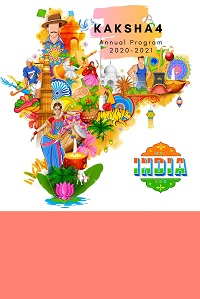
Price: $199 (16 Classes, 1.5 Hours per Class) VHS Certificate after successful completion of Annual Program.
Program Name: Kaksha3 Semester 1
Program Name: Kaksha3 Semester 1
Mode: Online
Class Duration: 1.5 Hour
Frequency : Once in a weekAge-Group : 8-9 years
Class Schedule:Days |
Monday | Tuesday | Wednesday | Thursday | Friday |
|---|---|---|---|---|---|
| Timing (CST) |
10:00am-11:30am
4:00pm-5:30pm |
11:30am-1:00pm
4:00pm-5:30pm |
1:00pm-2:30pm
5:30pm-7:00pm |
11:30am-1:00pm
5:30pm-7:00pm |
10:00am-11:30pm
5:30pm-7:00pm |
| Start Date | End Date | Fee (USD) | Total Classes | |
|---|---|---|---|---|
| Semester-1 | Aug 2020 | Dec 2020 | $199 | 16 Classes |
| Semester-2 | Jan 2021 | May 2020 | $199 (due in Nov) | 16 Classes |
Proficiency:
-
Reading-
-
At the Novice High sublevel, students can understand, fully and with relative ease, key words and cognates, as well as formulaic phrases across a range of highly contextualized texts.
-
Where vocabulary has been learned, they can understand predictable language and messages such as those found on train schedules, roadmaps, and street signs.
-
Students at the Novice High sublevel are typically able to derive meaning from short, non-complex texts that convey basic information for which there is contextual or extralinguistic support.
-
Writing-
-
Students at the Novice High sublevel are able to meet limited basic practical writing needs using lists, short messages, postcards, and simple notes.
-
They are able to express themselves within the context in which the language was learned, relying mainly on practiced material.
-
Their writing is focused on common elements of daily life.
-
Novice High writers are able to recombine learned vocabulary and structures to create simple sentences on very familiar topics, but are not able to sustain sentence-level writing all the time.
Due to inadequate vocabulary and/or grammar, writing at this level may only partially communicate the intentions of the writer.
Novice High writing is often comprehensible to natives used to the writing of non-natives, but gaps in comprehension may occur.
Speaking-
Students at the Novice High sub level are able to handle a variety of tasks pertaining to the Intermediate level, but are unable to sustain performance at that level.
They are able to manage successfully a number of uncomplicated communicative tasks in straightforward social situations.
Conversation is restricted to a few of the predictable topics necessary for survival in the target language culture, such as basic personal interlocutors used to non- natives.
When called on to handle a variety of topics and perform functions pertaining to the Intermediate level, a Novice High speaker can sometimes respond in intelligible sentences, but will not be able to sustain sentence-level discourse.
Listening-
At the Novice High sub level, students are often but not always able to understand information from sentence- length speech, one utterance at a time, in basic personal and social contexts where there is contextual or extralinguistic support, though comprehension may often be very uneven.
They are able to understand speech dealing with areas of practical need such as highly standardized messages, phrases, or instructions, if the vocabulary has been learned.
* This Program has two Semesters.
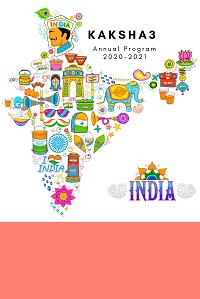
Price: $199 (16 Classes, 1.5 Hours per Class) VHS Certificate after successful completion of Annual Program.
Program Name: Kaksha2 Semester 1
Program Name: Kaksha2 Semester 1
Mode: Online
Class Duration: 1.5 Hour
Frequency : Once in a weekAge-Group : 7-8 years
Class Schedule:Days |
Monday | Tuesday | Wednesday | Thursday | Friday |
|---|---|---|---|---|---|
| Timing (CST) |
10:00am-11:30am
4:00pm-5:30pm |
11:30am- 1:00pm
4:00pm-5:30pm |
1:00pm-2:30pm
5:30pm- 7pm |
11:30am -1:00pm
5:30pm-7:00pm |
10:00am-11:30pm
5:30pm-7:00pm |
| Start Date | End Date | Fee (USD) | Total Classes | |
|---|---|---|---|---|
| Semester-1 | Aug 2020 | Dec 2020 | $199 | 16 Classes |
| Semester-2 | Jan 2021 | May 2020 | $199 (due in Nov) | 16 Classes |
Proficiency:
-
Reading-
-
Students are able to recognize the letters or symbols of an alphabetic or syllabic writing system or a limited number of characters in a character-based language.
-
They can identify a number of highly contextualized words and phrases including cognates and borrowed words but rarely understand material that exceeds a single phrase. Rereading is often required.
-
Writing-
Speaking-
Students at the Novice Mid sub level communicate minimally by using a number of isolated words and memorized phrases limited by the particular context in which the language has been learned.
When responding to direct questions, they may say only two or three words at a time or give an occasional stock answer.
They pause frequently as they search for simple vocabulary or attempt to recycle their own and their interlocutor’s words.
Students may be understood with difficulty even by sympathetic interlocutors accustomed to dealing with non-natives.
When called on to handle topics and perform functions associated with the Intermediate level, they frequently resort to repetition, words from their native language, or silence.
Listening-
-
Students at the Novice Mid sublevel can reproduce from memory a modest number of words and phrases in context.copy
-
They can supply limited information on simple forms and documents, and other basic biographical information, such as names, numbers, and nationality.
-
Novice Mid Students exhibit a high degree of accuracy when writing on well-practiced, familiar topics using limited formulaic language.
-
With less familiar topics, there is a marked decrease in accuracy; Errors in spelling or in the representation of symbols may be frequent.
-
There is little evidence of functional writing skills.
-
At this level, the writing may be difficult to understand even by those accustomed to non-native writers.
At the Novice Mid sub level, students can recognize and begin to understand a number of high- frequency, highly contextualized words and phrases including aural cognates and borrowed words.
Typically, they understand little more than one phrase at a time, and repetition may be required.
* This Program has two Semesters.
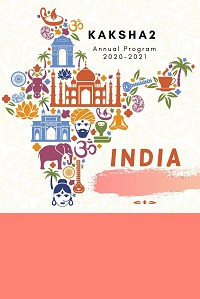
Price: $199 (16 Classes, 1.5 Hours per Class) VHS Certificate after successful completion of Annual Program.
Program Name: Kaksha1 Semester 1
Program Name: Kaksha1 Semester 1
Mode: Online
Class Duration: 1.5 Hour
Frequency : Once in a weekAge-Group : 6-7 years
Class Schedule:Days |
Monday | Tuesday | Wednesday | Thursday | Friday |
|---|---|---|---|---|---|
| Timing (CST) |
10:00am- 11:30am
4:00pm-5:30pm |
11:30am-1:00pm
4:00pm-5:30pm |
1:00pm-2:30pm
5:30pm-7:00pm |
11:30am -1:00pm
5:30pm-7:00pm |
10:00am-11:30pm
5:30pm-7:00pm |
| Start Date | End Date | Fee (USD) | Total Classes | |
|---|---|---|---|---|
| Semester-1 | Aug 2020 | Dec 2020 | $199 | 16 Classes |
| Semester-2 | Jan 2021 | May 2020 | $199 (due in Nov) | 16 Classes |
Proficiency:
-
Reading-
-
Students are able to recognize a limited number of Hindi letters, symbols or characters.
-
They are occasionally able to identify high frequency words and/or phrases when strongly supported by context.
-
Writing-
-
Students at the Novice Low sub level are able to copy or transcribe familiar words or phrases, form letters in an alphabetic system copy
-
Given adequate time and familiar cues, they can reproduce from memory a very limited number of isolated words or familiar phrases, but errors are to be expected.
Speaking-
Students have no real functional ability and, because of their pronunciation, may be unintelligible.
Given adequate time and familiar cues, they may be able to exchange greetings, give their identity, and name a number of familiar objects from their immediate environment.
They are unable to perform functions or handle topics pertaining to the Intermediate level, and cannot therefore participate in a true conversational exchange.
Listening-
The students are able to occasionally recognize isolated words or very high-frequency phrases when those are strongly supported by context.
* This Program has two Semesters.

Price: $199 (16 Classes, 1.5 Hours per Class) VHS Certificate after successful completion of Annual Program.
Program Name: Baal Kaksha Semester 1
Program Name: Baal Kaksha Semester 1
Course Duration: August - December 2020
Class Duration:
1.5 Hour
Mode: Online
Frequency : Once in a week
Age-Group : 3-5 years
Class Schedule:Days |
Wednesday | Thursday | Friday |
|---|---|---|---|
| Timings(CST) | 4:00pm-5:30pm | 4:00pm-5:30pm | 4:00pm-5:30pm |
| Start Date | End Date | Fee (USD) | Total Classes | |
|---|---|---|---|---|
| Semester-1 | Aug 2020 | Dec 2020 | $199 | 16 Classes |
| Semester-2 | Jan 2021 | May 2020 | $199 (due in Nov) | 16 Classes |
Proficiency:
- Students should be able to name people, animals, shapes, colors & body parts they see and objects like: clothes, toys etc they use in everyday life.
- Given adequate time and familiar cues, the students may be able to exchange greetings, give their identity and name a number of familiar objects from their environment.
* This Program has two Semesters.
